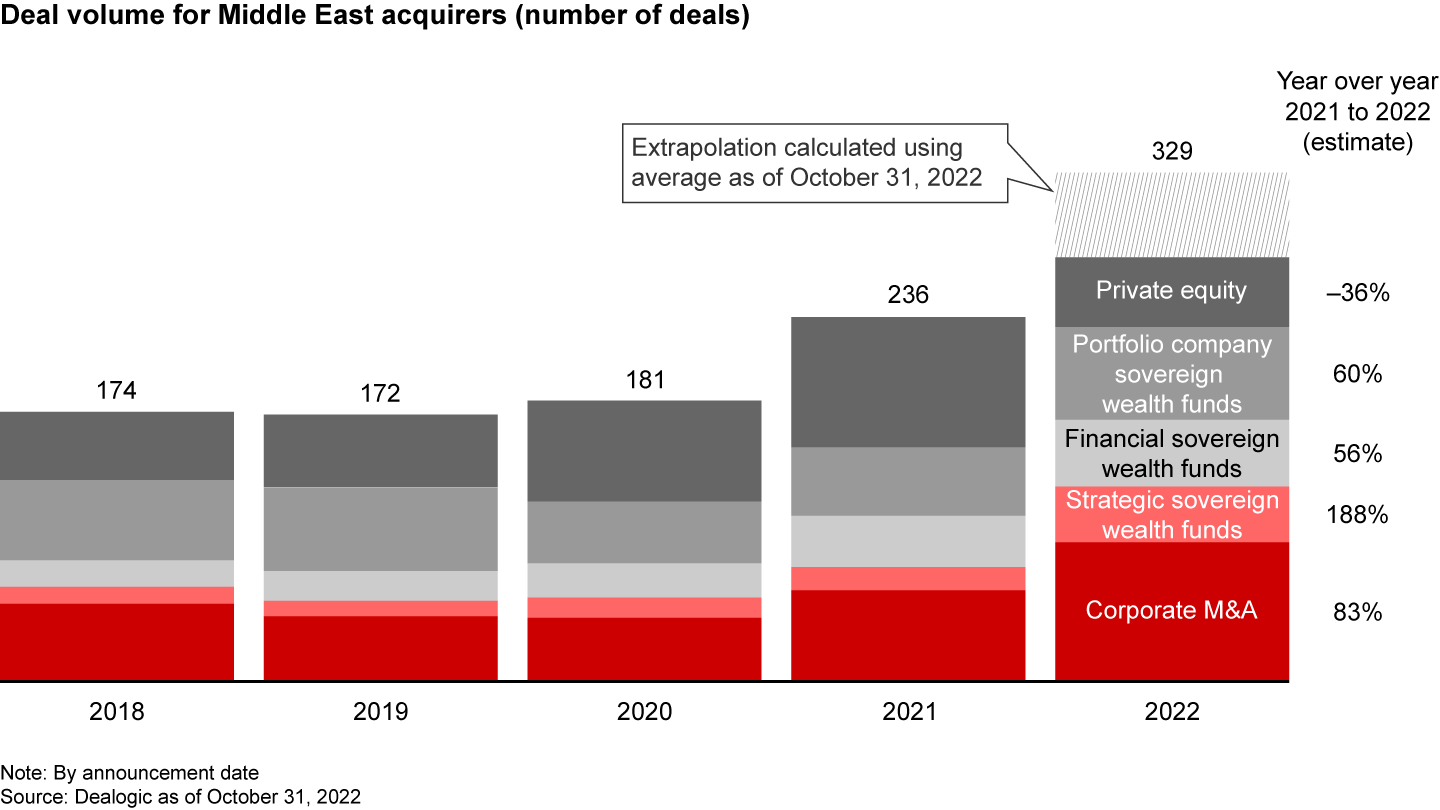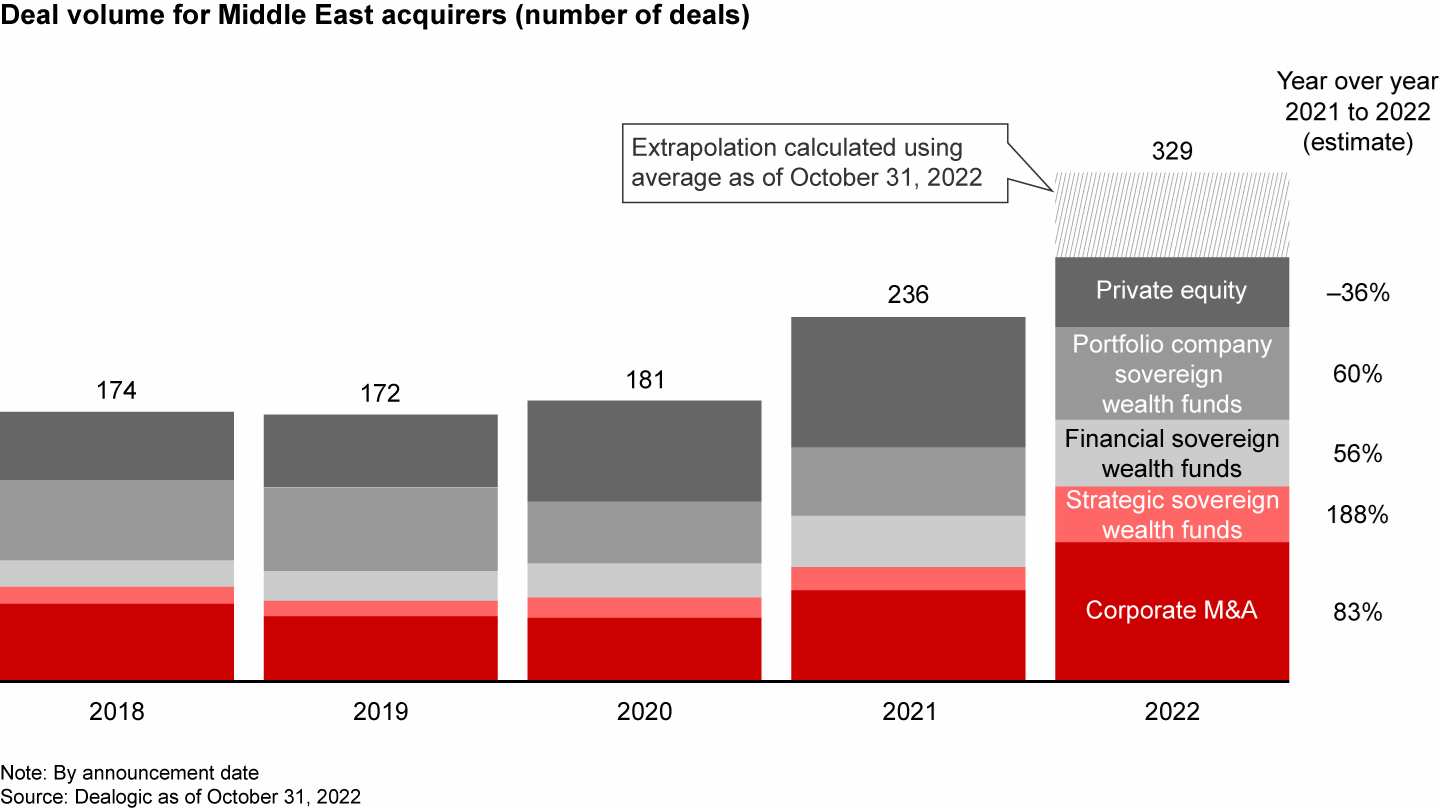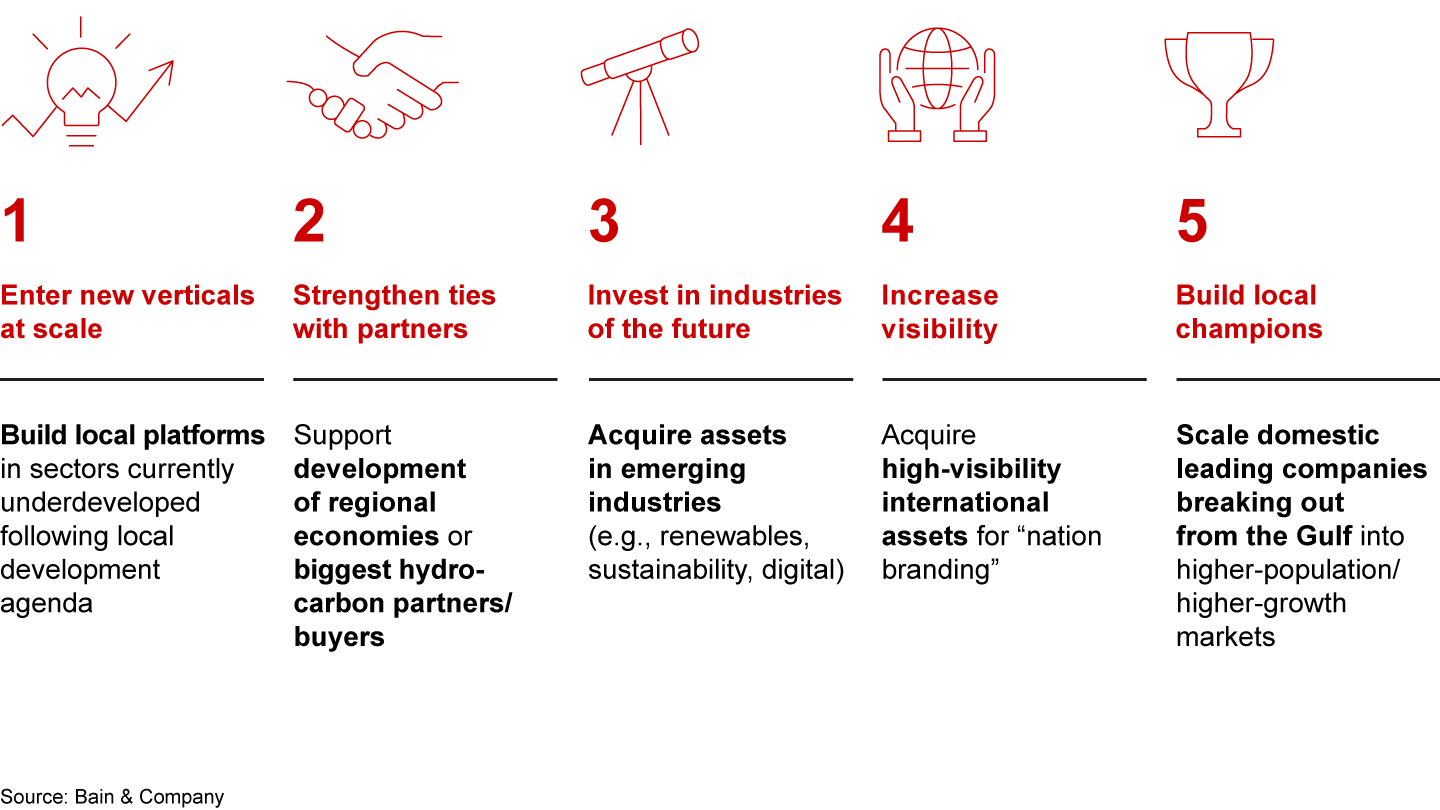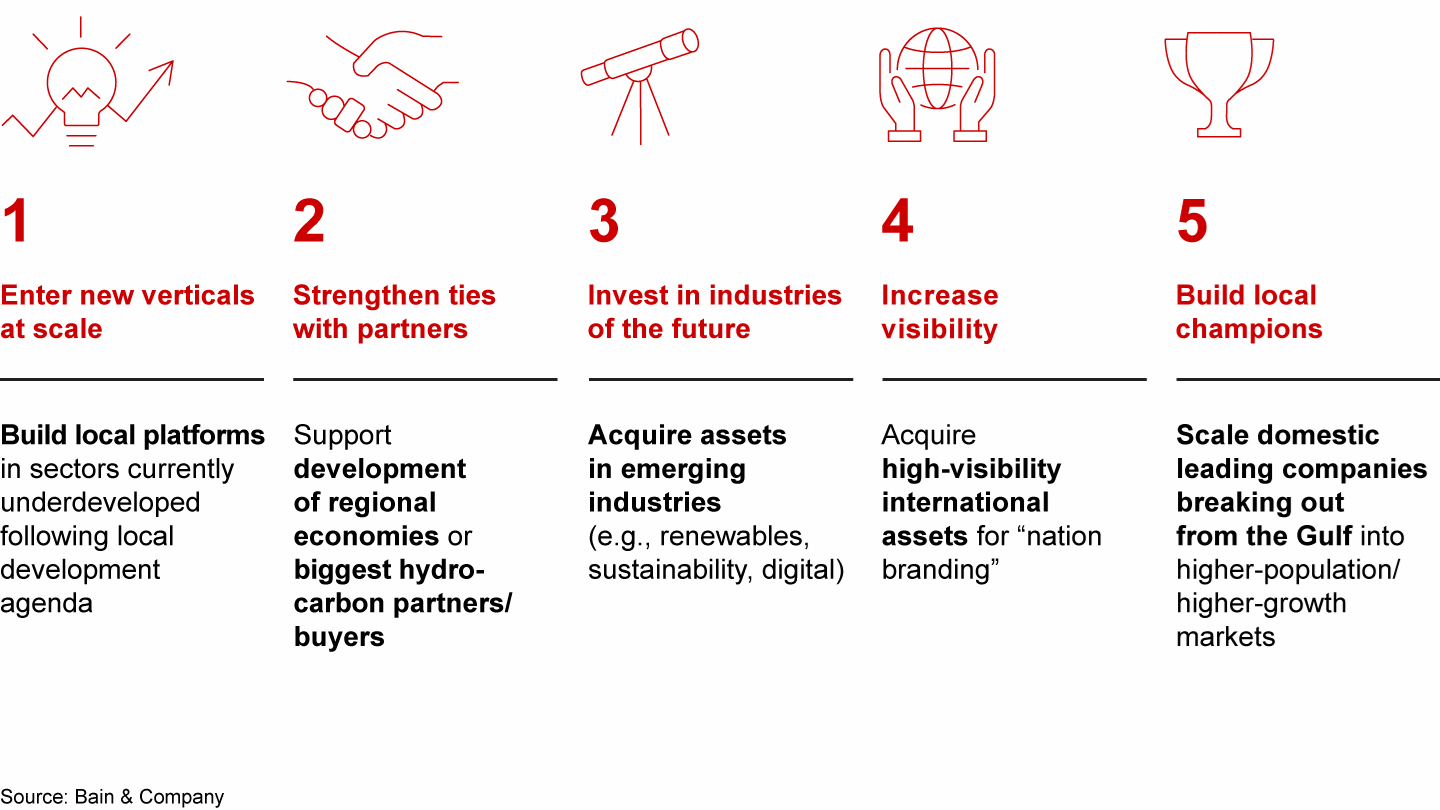M&A Report

Executive Summary
- Fueled in large part by government-owned sovereign wealth funds, M&A activity rose by about 39% in 2022 in the region.
- Combined, sovereign wealth funds and corporations represent 84% of deals, with private equity investors doing relatively few deals.
- Sovereign wealth funds are using M&A to scale into new verticals, strengthen partnerships, invest in the future, bolster the region, and build local champions.
This article is part of Bain's 2023 M&A Report.
With a strong economy buoyed by high oil prices, the Middle East is well positioned to rely on M&A to further advance the region’s long-term push to expand beyond hydrocarbons as well as globalize its companies. Most of the deal activity is fueled by sovereign wealth funds and local corporations, with the potential for foreign investors to start deploying capital in the region.
Indeed, these are good times for the local economy, with expected regional GDP growth of 6.5% (it’s 7.6% in Saudi Arabia), the highest it’s been in more than a decade. The Middle East’s sovereign wealth funds are growing, too, and with a new government mandate, they have become a treasure chest for much of the M&A activity. For example, Saudi Arabia’s state-owned Public Investment Fund (PIF) invested $1.3 billion in four Egyptian companies in August 2022, including Abu Qir Fertilizers and Alexandria Container and Cargo Handling.
The big move by governments to use sovereign wealth funds to transform the economies includes other dimensions that involve dealmaking. They are consolidating, attracting direct foreign investment, and encouraging local companies to grow internationally and enter underdeveloped sectors such as pharmaceuticals, media and entertainment, and renewables. They are investing in strategic deals to enhance local capabilities, and they are consolidating sectors to create local players that are regionally and globally competitive.
While these pieces have been in place for years, M&A activity reached an inflection point in 2021, which is reflected in an expected 39% rise in deal volume (including both strategic and financial M&A) in 2022 (see Figure 1).
2022 deal volume from Middle East acquirers is expected to surpass 2021 levels


Private equity activity, on the other hand, is limited in the region and has actually dropped by 36% in the first 10 months of 2022. Yet there are some signs of reviving interest from firms preparing for IPOs, which are booming.
Combined, sovereign wealth funds and corporations represent 84% of deals. Corporations are buying companies or forming partnerships to consolidate local markets in strategic sectors, such as the deal between Saudi British Bank and HSBC Saudi Arabia or the Etihad-Air Arabia joint venture. Meanwhile, regional companies are expanding internationally through cross-border M&A or through overseas investments. For example, Abu Dhabi’s FAB merged its Egyptian operations with Bank Audi Egypt, creating one of Egypt’s largest banks.
But sovereign wealth funds are where most of the action is. We identified five archetypes of how they invest in deals (see Figure 2).
Five archetypes for sovereign wealth fund M&A in the Middle East


Enter new verticals at scale. Sovereign wealth funds are building local platforms in underdeveloped sectors. That was the aim of Abu Dhabi-based ADQ’s acquisition of Swiss pharmacy company Acino and its 45% purchase of Louis Dreyfus, a leading merchant and processor of agricultural goods based in the Netherlands.
Strengthen ties with partners. Sovereign wealth funds also are doing deals to strengthen cross-border partnerships with hydrocarbon buyers as well as to support the development of regional economies. In addition to Egypt, PIF has established investment companies in Jordan, Bahrain, Sudan, Iraq, and Oman.
Sovereign wealth funds are where most of the action is.
Invest in industries of the future. Abu Dhabi-based Mubadala Investment has invested in Sweden-based GlobalConnect and the UK’s CityFibre.
Increase visibility. Sovereign wealth funds have been purchasing high-visibility assets internationally. Consider Qatar Investment Authority’s acquisition of the St. Regis Hotels in New York and San Francisco, as well as making investments in Rolls-Royce.
Build local champions. Finally, sovereign wealth funds are making strategic portfolio investments to build local companies into businesses capable of competing outside the region. In its effort to become a powerhouse in the world of eSports and gaming, PIF-funded Savvy Games bought more than 8% of Swedish gaming company Embracer. The investment comes on the heels of Savvy’s 5% stake in Nintendo and its $1.5 billion purchase of ESL Gaming and FaceIT.
This hyperactivity to expand and globalize opens up opportunities for companies and financial sponsors both within and beyond the Middle East. Family-owned businesses and conglomerates will have opportunities to divest noncore assets and reallocate capital for long-term strategic investments in their core business. Some will sell assets to companies looking to grow internationally while others will use it as a chance to grow in the Middle East market. Either way, M&A in the Middle East requires a different approach than most dealmakers take in other parts of the world.
Regional investors need to deploy more feet on the ground to source proprietary deals.
Regional investors need to gradually deploy more feet on the ground to source proprietary deals in target geographies and sectors of interest. For sovereign wealth funds, that means leveraging general partner relationships to source deals, either directly or as coinvestments. It also requires coordinating local and international units to create synergies across investments. For corporations, this would involve identifying sources of differential synergies that give them an edge over sovereign funds. The best investors carefully consider what a regional or global platform should be in order to generate synergies among groups. They also revisit their portfolio on a regular basis.
International financial sponsors need a separate range of considerations, such as how to gain access to proprietary deals, how to transfer capabilities, and how to localize a portfolio for the Middle East. In the years ahead, we expect more international companies will explore the cross-border possibilities of partnering with sovereign wealth funds and local authorities to create new sectors through joint ventures.